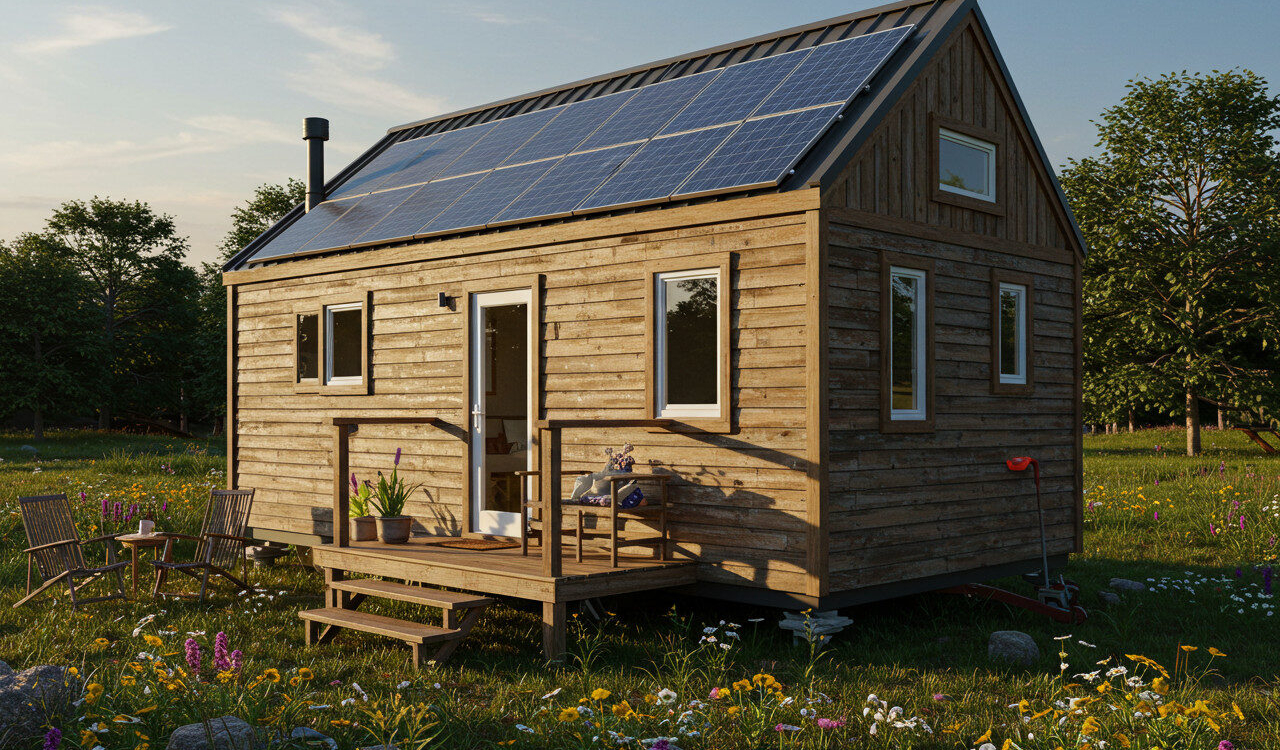Introduction
Building a tiny home can be a great way to live simply and affordably, but it comes with its own set of financial problems. The price depends on things like size, materials, and labor, and financing is often different from a regular mortgage. You can keep your finances in check from the time you start building until the time you need to do long-term maintenance if you plan ahead, set a realistic budget, and are aware of any potential hidden costs.
The True Costs of a Tiny Home
The cost of building a tiny home goes beyond just the price of the materials. You will have to pay for land, labor, utility connections, and property taxes. You will still have to pay for things like electricity, water, and maintenance after your home is finished. In the US, small homes usually cost between $30,000 and $150,000. Custom builds on land you own are usually more expensive, but prefabricated models can help you save money. Knowing where your project fits in this range can help you set a realistic budget.
Preparing for Unexpected Expenses
It’s easy to underestimate the number of extra costs that arise during construction. Site preparation, zoning permits, and utility connections can add thousands to your budget. Labor shortages or delays may increase expenses as well. Setting aside a contingency fund before breaking ground ensures you can handle these surprises without jeopardizing the project.
Creating a Realistic Financial Plan
A strong financial plan outlines all anticipated expenses and post-build costs. It should also include savings for repairs and replacements in the years ahead. Before choosing a financing option, check your credit score to qualify for better rates and terms. Whether you opt for a personal loan, RV loan, or home equity line of credit, make sure repayment terms fit comfortably within your monthly budget.
Long-Term Financial Considerations
Tiny homes generally come with lower utility bills than traditional houses, but they still require upkeep. Appliances, roofing, and plumbing systems will eventually need maintenance or replacement. Property taxes and insurance should also be included in your annual financial planning. By budgeting for these costs early, you can avoid dipping into emergency savings later.
Financing Options for Tiny Homes
Traditional mortgages can be difficult to obtain for tiny homes, especially if they are mobile.
Alternative financing options include:
- RV loans for mobile tiny houses
- Personal loans for quick funding without collateral
- Home equity lines of credit (HELOCs) with lower interest rates
- Specialized tiny home lenders who understand the market
- Grants or incentives for eco-friendly builds
Comparing interest rates, repayment terms, and lender experience ensures you choose the best option for your situation.
Avoiding Overspending During Construction
Budget overruns often happen when homeowners change designs or materials mid-build. Selecting durable, cost-effective materials like reclaimed wood and using multifunctional furniture can help maintain both budget and quality. Energy-efficient appliances are a smart investment, reducing monthly bills while supporting sustainability.
Staying Organized With Budgeting Tools
Tracking your spending during construction is crucial. Many owners use apps such as Mint or YNAB for real-time expense monitoring, while others prefer custom spreadsheets in Excel or Google Sheets. The key is reviewing your spending regularly to ensure it aligns with your budget.
Managing Finances After Completion
Once your tiny home is finished, continue monitoring expenses. Update your budget for changes in taxes, insurance, and maintenance costs. Keep adding to your emergency fund, and watch for opportunities to refinance at better rates. This proactive approach ensures the financial stability of your tiny home lifestyle for years to come.
Conclusion
Building a tiny home offers a way to simplify living and free up money for other priorities. Success depends on thorough planning, tracking all costs, and preparing for ongoing bills. Smart financial management helps create a comfortable home that fits your budget and protects your financial future.
Frequently Asked Questions
Are there programs that assist with buying or building a tiny home?
Yes, many local, state, and federal programs offer grants, tax credits, or other support to make tiny homes more affordable. Availability varies by location, so researching regional options can help you save money.
How does financing a tiny home differ from a traditional mortgage?
Lenders often treat tiny homes differently from standard houses, making conventional mortgages harder to obtain. Buyers commonly use personal loans or specialized tiny home loans as alternatives.
Can I finance a tiny home as an investment property?
Yes, but lenders may require larger down payments and higher credit scores. It is important to check local regulations and potential rental income before proceeding.
What are common financial mistakes to avoid when building a tiny home?
Failing to account for total and extra costs, lacking a clear budget, and selecting materials or features without planning can all cause overspending.
Updated by Albert Fang
Source Citation References:
+ Inspo
Press, T. (2025). Personal finance simplified: The step-by-step guide for smart money management. Sourcebooks, Inc..

